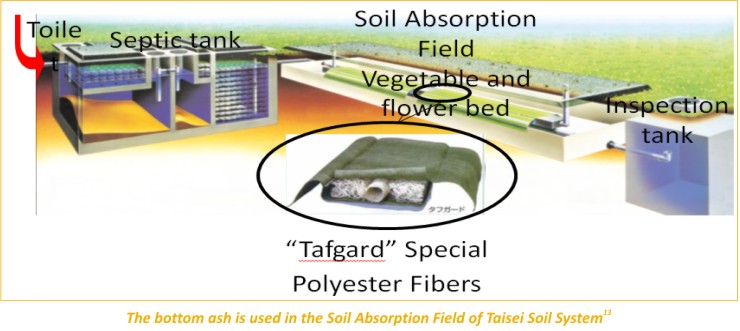|
Use of Coal Bottom Ash for Wastewater Treatment India is largely dependent on coal power, which provides for around 56% of the country’s electrical supply needs.1 The country hosts vast coal reserves in Jharkhand, Odisha, Chhattisgarh, West Bengal, Madhya Pradesh, Telangana and Maharashtra.2 This makes coal the most important raw material used in thermal power plants to generate electricity thereby producing two types of solid by-products; fly ash and bottom ash collectively called coal ash. The bottom ash gets collected at the bottom of the furnace, while the lighter fly ash gets blown upward and is collected by precipitators or filters. Normally in a fossil fired boiler, 20% of the total coal ash is bottom ash and balance 80% is fly ash.3 Generally Indian coal contains about 30 to 45% ash. Considering a thermal power plant of 2000 MW capacity, the daily ash production will be about 13200 tonnes out of which 2200 tonnes will be bottom ash and remaining 11000 tonnes will be fly ash.4 With the total electricity production by coal in the country standing at 202070 MW5, the amount of coal ash produced per day is estimated6 to be 2.6 million tonnes out of which 0.43 million tonnes is the estimated production of bottom ash. Environmentally safe disposal of large quantities of coal ash is not only tedious and expensive, but also poses its own set of challenges. Disposal of ash results in increased land usage, capital loss to power plants, health hazards, ecological imbalances and related environmental problems.7 The above challenges call for a need for identification and implementation of effective strategies that promote the usage of this industry by-product in a sustainable manner. Coal ash is mainly used as construction material in civil engineering applications such as cement production, construction of roads and embankments and in geo-polymer applications. Moreover, it can be potentially used in applications such as glass ceramics, water and wastewater treatment, agriculture etc. Though the generation of bottom ash is relatively less compared to fly ash, it nevertheless finds its applications in various fields including wastewater treatment owing to its properties. As compared to fly ash, bottom ash is a coarse and granular material with particle size in the range of 0.1–10 mm and with apparent dark grey colour. Other characteristics of coal bottom ash are: Total Organic Carbon: 11.74–52.24 wt%, specific gravity: 2.30–3.00, bulk density: 1.15–1.76 g cm-3 and specific surface area: 0.17–1.0 m2 g-1.8 Studies have been conducted using bottom ash in agriculture and for soil reclamation. It was revealed that clay soils mixed with bottom ash can enhance tilth, reducing the crust formation and higher friability of the clay soil.9 Soils mixed with bottom ash showed high water holding capacities as well as air content.10 The physical properties of bottom ash make it suitable for usage in wastewater treatment. One such example is the use of bottom ash in Taisei Soil System (TSS) technology for decentralised wastewater treatment. The technology has been developed by Taisei Kougyou Co. Ltd.11 and under a Japan International Cooperation Agency - JICA12 funded project, Development Alternatives Group in collaboration with Taisei Kougyou Co. Ltd. is pilot testing the TSS system in Varanasi and Muzaffarnagar cities in India with the installed treatment capacity of 4000 L/day and 8000 L/day respectively. The bottom ash is mainly used in Soil Absorption Field of the TSS system where it enhances the upward movement / siphon flow of wastewater through capillary action to the surface of bottom ash bed whereby the treated wastewater gets evaporated or sucked by the roots of the plant and finally ends up in the atmosphere by evapo-transpiration process. The bottom ash used in the TSS system ensures that the water is dispersed evenly into the soil absorption field in an unsaturated flow and also helps in maintaining aerobic conditions in the soil through siphoning process which in turn leads to the aerobic treatment of wastewater and reduction of BOD by 98%. The whole TSS system is installed underground. Consequently, the bottom ash bed surface is available for planting. The plants cultivated on the bottom ash bed can safely absorb water and nutrients from the bottom ash bed.
Conclusion: Using bottom ash has a two-fold advantage; first, to avoid the tremendous environmental problems caused by large scale dumping of bottom ash, and second, to help in sustainable development of the environment by utilising the ash for various applications including wastewater treatment. ■
Endnotes
Utkarsh Sethia
|
